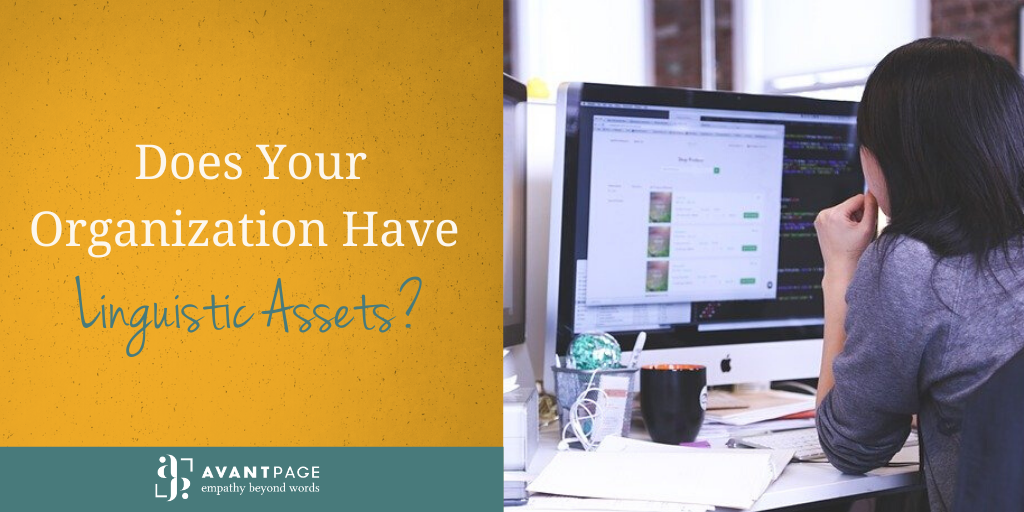There are many moving parts to a translation project. Whether you’re new to translating your organization’s documents or you’re a seasoned veteran, streamlining the process can be challenging. That’s where translation tools come in to help. Linguistic assets can help to organize your translation projects by making your translators aware of your linguistic preferences before beginning your projects.
What are linguistic assets?
Linguistic assets indicate key style preferences for your organization’s translation projects. Translation Memories (TMs), glossaries, and style guides are all considered linguistic assets.
Translation Memory reuses past translations to increase translation efficiency. When your translation project is completed, the language from the original (or source) document is stored along with the language from its translated counterpart in a secure database. This occurs with every project as you begin to build a translation memory.
Glossaries, another linguistic asset, include a set of key terms and their approved translations. They’re particularly useful for indicating approved translations of industry-specific terms, and terms you want consistently translated across your documents.
Style guides, the last of the linguistic assets you should be aware of, inform your LSP and translators about your organization’s look, voice, and general identity. This is also a great place to address practical questions for your translators, such as how to handle translating acronyms and what words should be left in English.
Why does your organization need linguistic assets?
Creating and using linguistic assets in concert with your LSP has a variety of benefits to your translation projects and your organization.
- Linguistic assets can help to create or improve consistency across your translated documents because your LSP is aware of your translation preferences.
- Your translation projects can be completed in a reduced amount of time. If your translators are aware of your preferences and checking your current translations against your TM Database, then they’ll be able to reduce the amount of time spent on your new translation projects.
- Reduced editing post-translation. When you’re reviewing your LSPs translations, you’ll find fewer corrections that you need to make because your LSP was aware of your preferences from the start. This can reduce time and even cost spent on your translation projects.
Using linguistic assets can help to support your efforts to streamline your translation projects. We can help you create style guides, glossaries, and Translation Memory databases. Call us at 530-750-2040, or request a free quote today.
GET VALUABLE CONTENT DELIVERED STRAIGHT TO YOUR INBOX. SIGN UP FOR OUR NEWSLETTER TODAY!

Ash is the Marketing Coordinator at Avantpage, Inc. Ash works to create high-value, targeted content that allows consumers to connect with us at Avantpage. They are a strong proponent of everyone having equal access to communication and information. They have written and created content for a variety of online platforms, and have been published in over 30 online platforms with varying topics. But Ash is other things too! An avid athlete, Ash enjoys spending their free time rock climbing, partaking in aerial circus sports, and practicing acroyoga.
